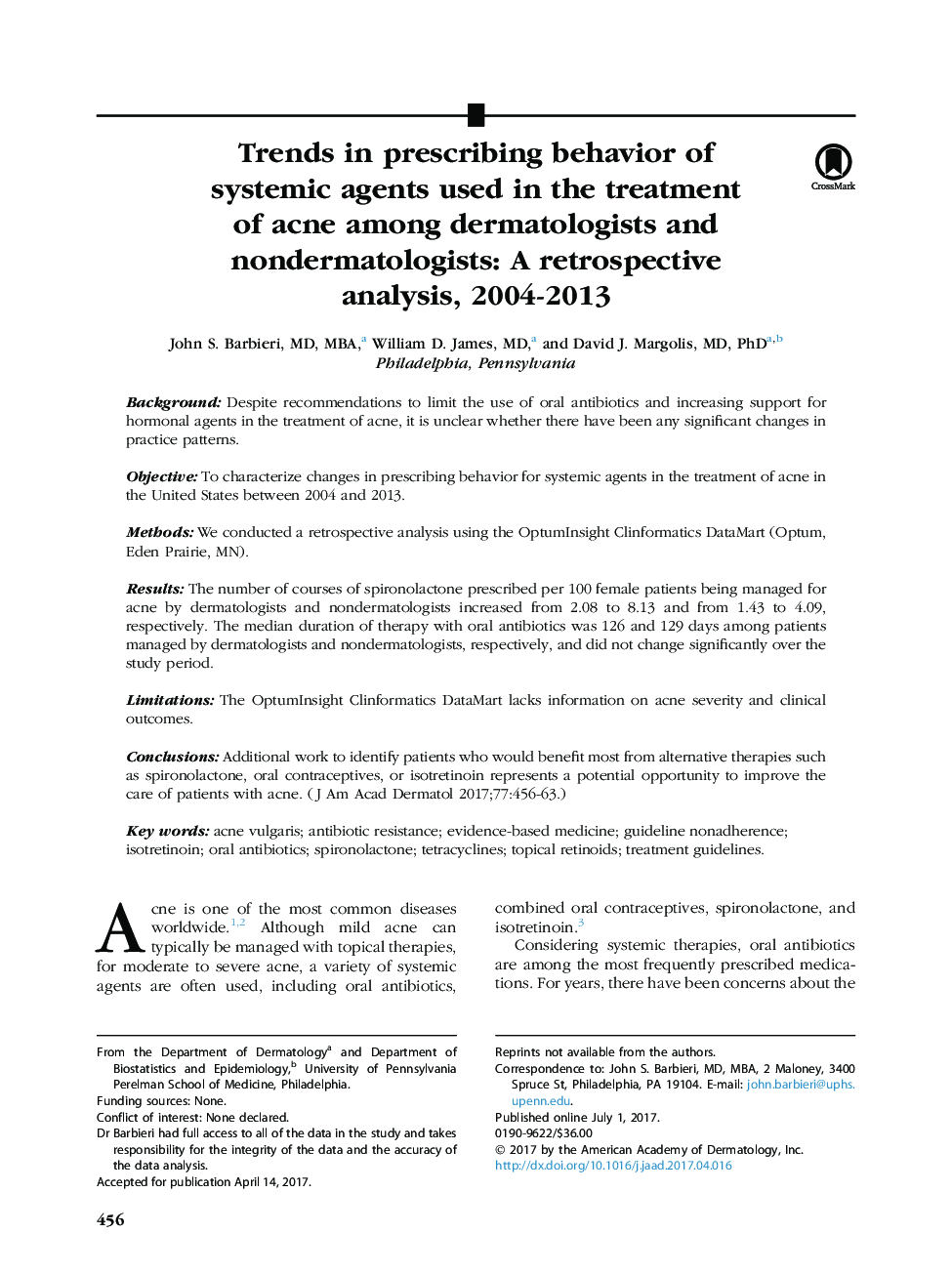| Article ID | Journal | Published Year | Pages | File Type |
|---|---|---|---|---|
| 5648267 | Journal of the American Academy of Dermatology | 2017 | 12 Pages |
BackgroundDespite recommendations to limit the use of oral antibiotics and increasing support for hormonal agents in the treatment of acne, it is unclear whether there have been any significant changes in practice patterns.ObjectiveTo characterize changes in prescribing behavior for systemic agents in the treatment of acne in the United States between 2004 and 2013.MethodsWe conducted a retrospective analysis using the OptumInsight Clinformatics DataMart (Optum, Eden Prairie, MN).ResultsThe number of courses of spironolactone prescribed per 100 female patients being managed for acne by dermatologists and nondermatologists increased from 2.08 to 8.13 and from 1.43 to 4.09, respectively. The median duration of therapy with oral antibiotics was 126 and 129Â days among patients managed by dermatologists and nondermatologists, respectively, and did not change significantly over the study period.LimitationsThe OptumInsight Clinformatics DataMart lacks information on acne severity and clinical outcomes.ConclusionsAdditional work to identify patients who would benefit most from alternative therapies such as spironolactone, oral contraceptives, or isotretinoin represents a potential opportunity to improve the care of patients with acne.
